Update 07.01.2019 -- Run 9 pp: Unfolding After Various Fixes
Following up from the post below, it's time to try to unfold. This should tell us whether or not everything is all okay in our parameterization of the response.
https://drupal.star.bnl.gov/STAR/blog/dmawxc/update-06102019-run-9-embedding-pythia8-vs-pythia6-responses-after-all-fixes
First, as a sanity check, I used the Pythia8 response to unfold the detector-level Pythia8 spectrum and the Pythia6 (embedding) response to unfold the detector-level Pythia6 spectrum.

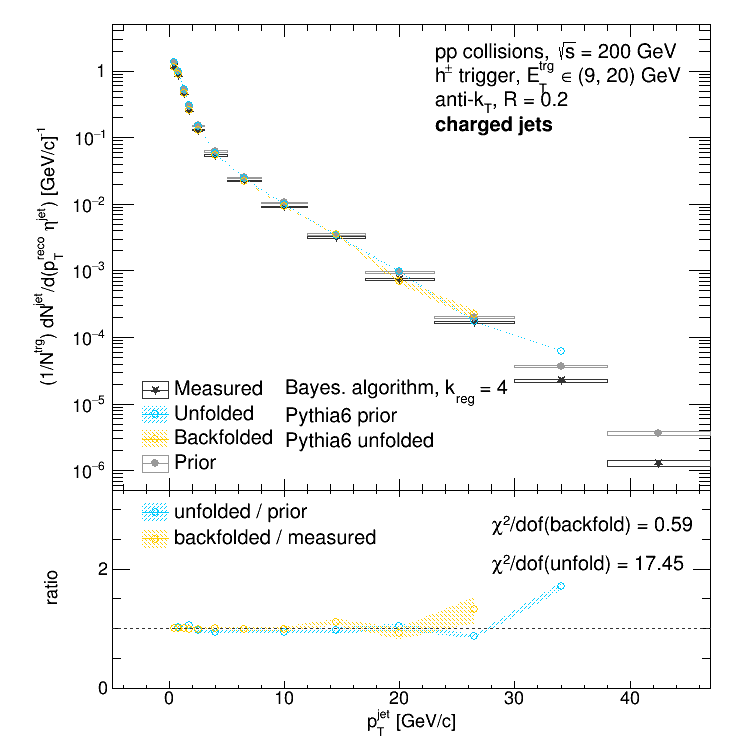
All looks pretty reasonable; the big deviations past pTjet > 30 GeV/c aren't worrisome: that's outside of our dynamic range. The backfolded solution in both cases overshoots the original spectrum, however. As of writing this now, I'm not sure what's the cause of that...
Next, I unfolded the detector-level Pythia8 using the Pythia6 response and vice versa. Note that in the plots below, the "prior" plotted is from the sample used to generate the response, so the unfolded-to-prior ratio is not a meaningful metric. I should probably go back and compare the unfolded solutions to the actual particle-level spectra, but that is for another time...
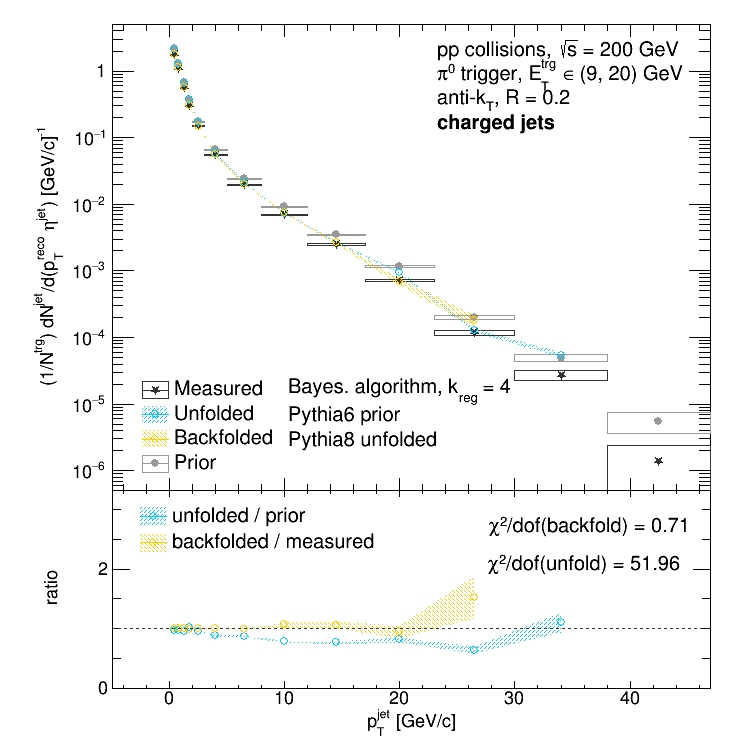
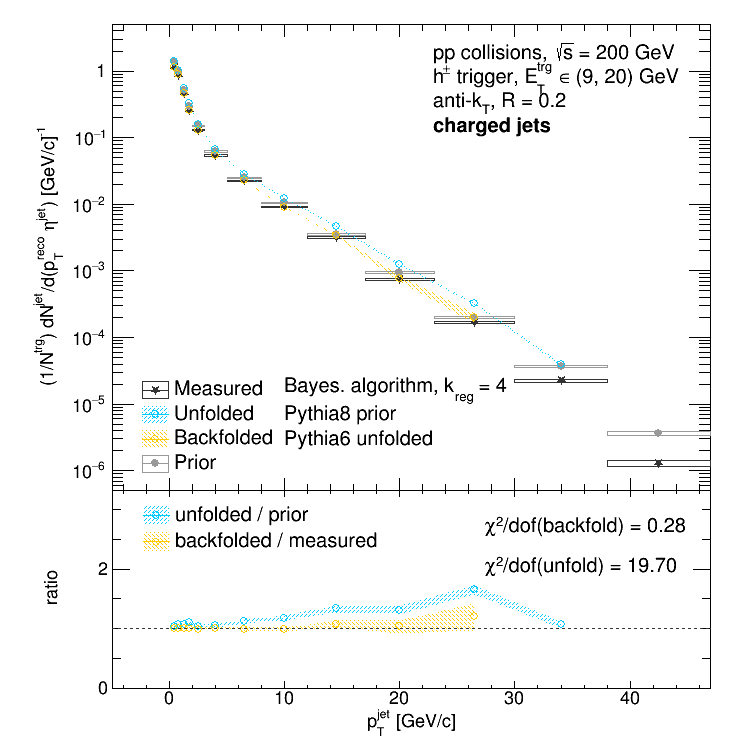
Despite the plotting gaffe, the backfolded solutions look quite good. Though, once again, the last points of the backfolded spectra overestimate the original detector-level spectra...
And lastly, I used both samples to unfold our pi0 data. I'll make more detailed comparisons of the unfolding in a subsequent post. For the time being, all looks reasonable; the backfolded solutions look nice.
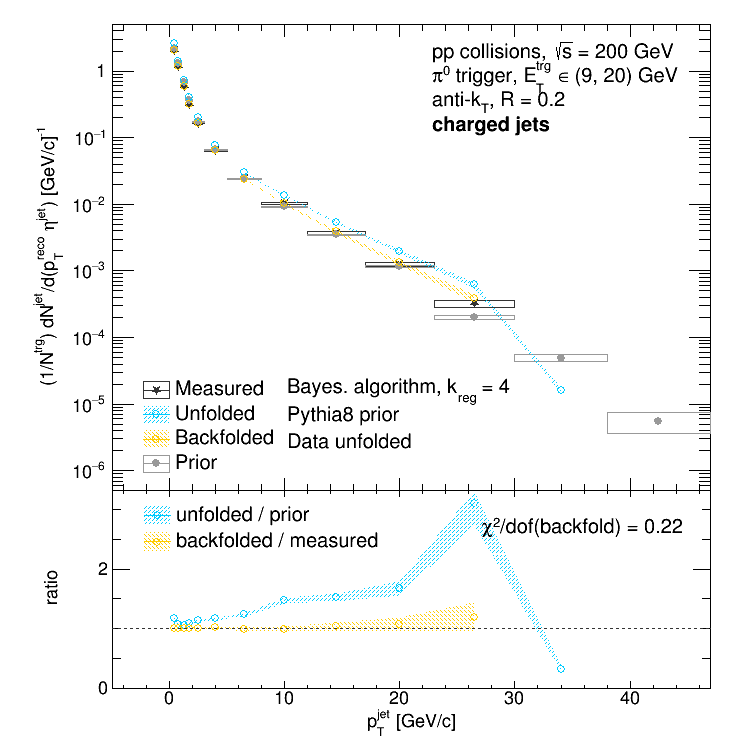
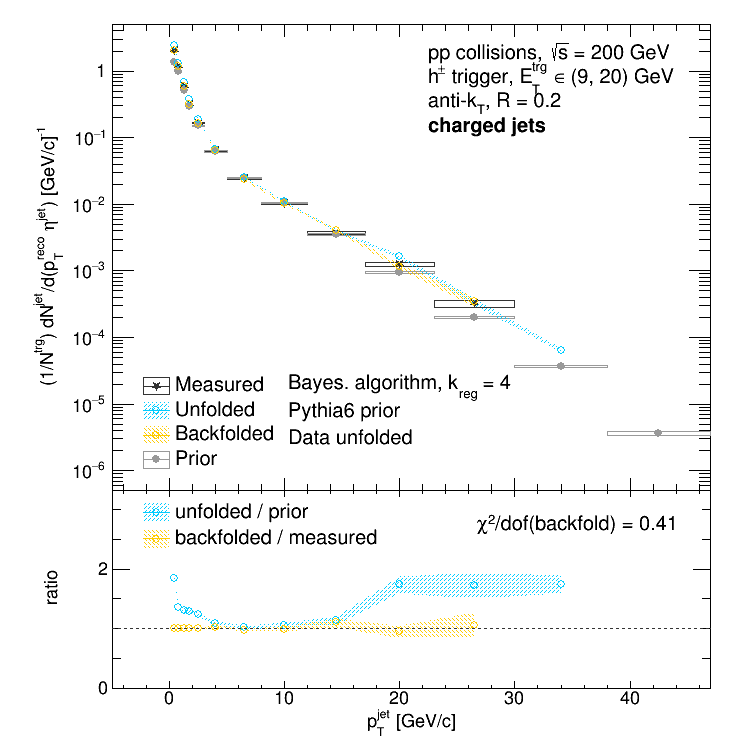
- dmawxc's blog
- Login or register to post comments
